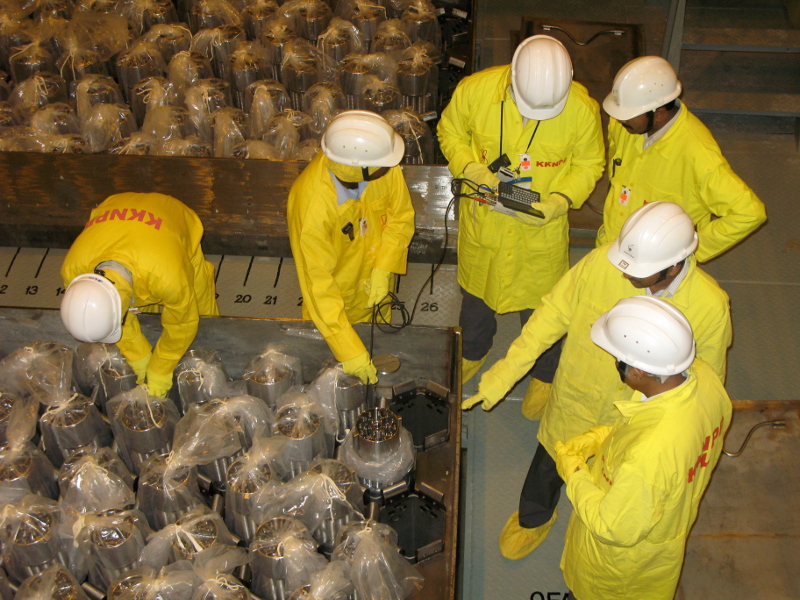The Kudankulam nuclear power plant (KKNPP) located in Tirunelveli, Tamil Nadu, is India’s biggest nuclear power station, with a current installed capacity of 2GW.
Owned and operated by the state-run Nuclear Power Corporation of India (NPCIL), the power station is being further expanded with two under construction units and two planned units of 1,000MW each.
The Kudankulam NPP will comprise six VVER-1000 pressurised water reactor (PWR) units of Russian design for a combined capacity of 6GW.
Units one and two of the plant are in commercial operations since December 2014 and March 2017 respectively, while construction works on units three and four were started in June and October 2017, with commissioning expected in 2022 and 2023, respectively.
Project Gallery
-

The Kudankulam nuclear power project is located in Tamilnadu, India. Image courtesy of Reetesh Chaurasia.
-

The Kudankulam nuclear power station will consist of six 1000MW PWR units. Image courtesy of indiawaterportal.org.
-

The Kudankulam nuclear power station uses Russian PWR technology. Photo Credit: Kirstie Hansen / IAEA.
Preparatory works have also been underway for units five and six of the plant, following a general framework agreement signed between India and Russia for the construction of the last two units at the Kudankulam site in June 2017.
Kudankulam NPP background
The Kudankulam nuclear power project was originally proposed to be developed with two reactor units as part of an Indo-Russian agreement signed in 1988. The project development, however, couldn’t take off due to the dissolution of Soviet Union and subsequent leadership changes in both the countries.
The project was revived under new inter-governmental agreement between India and Russia in March 1997.
Preparatory works were started in 2000, while the main construction works for the first two reactor units were started in March and July 2002, respectively.
Although both the units were originally scheduled for commissioning by 2009, the project suffered delays due to protests by local inhabitants and activist groups over safety concerns.
The 2011 Fukushima nuclear disaster in Japan further intensified opposition to the project resulting in the suspension of construction works for several months during 2011 and 2012.
The construction was resumed after the Supreme Court of India rejected petitions to block the project and permitted the commissioning of both the units in May 2013.
Kudankulam NPP reactor details
Kudankulam is the first and only Indian NPP to use pressurised water reactor (PWR) technology. It is equipped with AES-92 model third-generation VVER-1000 PWR units of Russian design that come with a combination of active as well as passive safety features including the passive heat removal system (PHRS), hydrogen re-combiners, core catcher, hydro accumulators, and quick boron injection system (QBIS).
Contained in a cylindrical high-pressure vessel made of heat-resistant alloyed steel, each reactor uses enriched uranium as fuel and light water as coolant and moderator. The coolant loop is separated from the steam system.
Each reactor vessel is housed within a double containment structure with the inner containment wall made of steel and the outer wall made of heavy reinforced concrete.
Contractors involved
Atomstroyexport, a subsidiary of the Russian State Nuclear Energy Corporation (Rosatom), is responsible for the technical design, equipment supply, construction supervision, reactor commissioning, as well as training for operation and maintenance of the reactor units at Kundankulam.
It was awarded the design and equipment supply contract by NPCIL for the fifth and sixth reactor units of the plant in July 2017.
Bharat Heavy Electricals (BHEL) was awarded a £50m ($63m) contract for erecting the turbine generator islands for units three and four of the Kudankulam NPP in June 2019.
Reliance Infrastructure received a £120m ($172m) engineering, procurement, and construction (EPC) contract for the common services system, structure, and components (SSC) package and associated civil works in April 2018.
